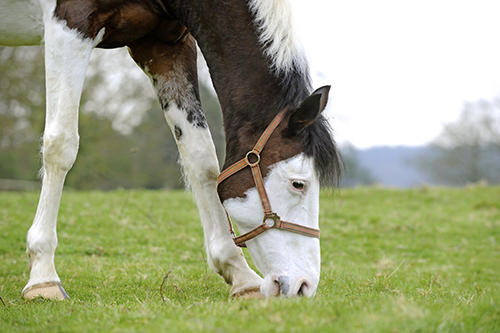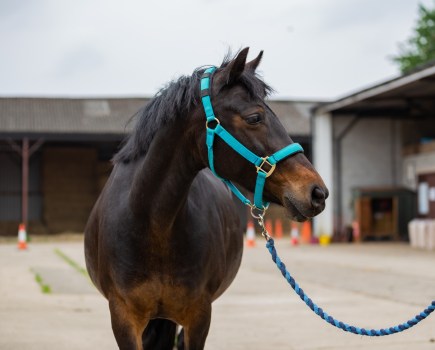New research has increased knowledge about how best to manage equines with Cushing’s syndrome — for which the correct veterinarty term is Pituitary Pars Intermedia Dysfunction (PPID) — one of the most common issues affecting senior horse health.
The study shows that pergolide mesylate, which is the most common drug used to treat Cushing’s, may reduce the amount of insulin produced in response to eating in equines that have PPID and insulin dysregulation.
It also suggests that a low sugar and starch diet remains important in order to keep insulin levels as low as possible.
The paper was published by the University of Melbourne in partnership with Spillers, and has been selected as one of the most clinically relevant pieces of research published in the Equine Veterinary Journal’s early view section this month.
About the study
As part of the study, 16 senior horses — eight with Cushing’s and insulin dysregulation and eight with insulin dysregulation (ID) only — took part in a standard meal test.
This involved measuring the concentration of insulin in their blood before and after eating a high starch meal. By the end of the study, all horses had completed the standard meal test twice, once after four weeks of pergolide treatment and once without pergolide treatment.
The results showed the following:
- That pergolide treatment had reduced blood insulin levels after eating in horses with Cushing’s and ID to the same level seen in those horses with just ID.
- That pergolide treatment had no effect on blood insulin levels in horses with insulin dysregulation only.
- Even when treated with pergolide, the horses produced higher levels of insulin in response to eating a starch- and sugar-rich meal than seen in healthy horses.
‘Diet remains crucial’
“The results suggest that pergolide may reduce the amount of insulin produced in response to eating in horses and ponies that have PPID together with ID but not back to normal,” said Sarah Nelson, product manager at Mars Horsecare, home of Spillers.
“However, it is also important to note that sugar and starch can still raise insulin to abnormally high levels even when the horses and ponies are on pergolide, meaning that a low sugar and starch diet remains crucial for horses with PPID and/or ID.
“Finally, given that horses with ID only did not respond to pergolide, we must ensure that PPID and ID are tested for separately — managing one will not necessarily manage the other.”
What is Cushing’s?
Cushing’s is a common condition in older horses and ponies and affected equines are at increased risk of suffering from laminitis, especially if they also have insulin dysregulation.
In fact, laminitis associated with a high concentration of insulin the blood (hyperinsulinemia), is now thought to be the most common form of laminitis in the UK.
Pergolide has been shown to be effective in managing some of the main associated clinical signs of Cushing’s. As laminitis is such a painful and potentially devastating condition, the researchers were keen to find out whether pergolide might help to reduce ID.
Research paper
The full paper — Galinelli NC, Bamford NJ, Erdody ML, Mackenzie SA, Warnken T, Harris PA, et al. Effect of pergolide treatment on insulin dysregulation in horses and ponies with pituitary pars intermedia dysfunction. Equine Vet J. 2025 — can be viewed here.









